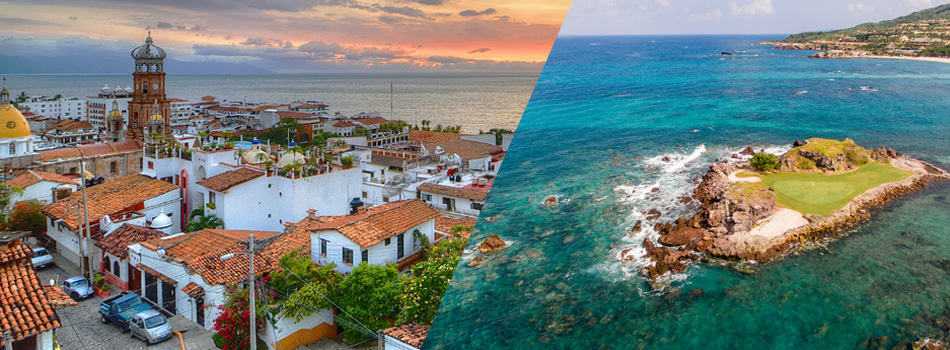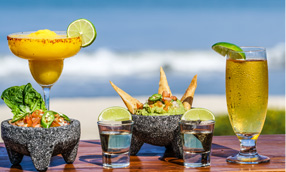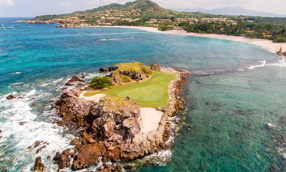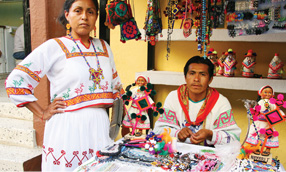Alaska beyond the cruise ships
If you’ve ever wondered what an Anchorage-based itinerary can deliver beyond the classic cruise route, consider this your invitation to explore an Alaska that feels wonderfully immersive, uncrowded, ...
Read moreWe recognize that Disney vacations are not just an investment, but often the highlights of our lives, and we take that responsibility seriously. We want to ensure you have the best vacation experience. Interested in a job in travel? Click here to learn: How to Become a Disney Travel Agent
Jump to section: A B C D E F G H I J K L M N O P Q R S T U V W X Y ZSee our Disney travel agents near me.

Sponsored by the Puerto Vallarta Tourism Board and Riviera Nayarit Visitors and Conventions Bureau
Two destinations united geographically that live as one. This region is one of the Mexico's most popular tourism corridors because of its great climate and incredible diversity. It's this boundless diversity that provides our visitors with such a range of unique experiences too many to describe that you have to live it.
Located on Mexico’s Pacific Coast, Puerto Vallarta and the Riviera Nayarit are neighboring destinations geographically divided by the Ameca River. Both share one airport: Puerto Vallarta lies just south of the International Airport in the state of Jalisco and the Riviera Nayarit is located in the state of Nayarit north of the airport. It is a privileged location, as we are fortunate to share a coastline with Banderas Bay, one of the largest and most beautiful bays in the world. Our visitors can cross from one place to the other in a matter of minutes, giving them the opportunity to explore the many attractions that make Puerto Vallarta – Riviera Nayarit a unique destination.
The predominant climate is classified as “warm sub-humid”, with an average annual temperature of 77° Fahrenheit. It’s blessed with sunny weather 90 percent of the time, making the conditions ideal for an exuberant amount of multicolored flora at the landscape.
Valid passport needed for entry
Spanish (English is widely spoken)
Mexican peso (American dollars are widely accepted)
Average daily high temperature is 86° F and average daily low temperature is 70° F

Blessed by nature, Vallarta-Nayarit offers several protected natural areas including botanical gardens, immense mangroves, lagoons, islands, rivers and waterfalls where our visitors can enjoy a large array of species of flora and fauna, including brilliantly colored flowers, thousands of palm trees, bougainvillea, orchids and fruit trees such as wild mango, papaya, orange and lime trees, just to name a few examples of the regional flora. Marine life such as whales, sea turtles, dolphins, giant Pacific manta rays and tropical fish are easy to spot depending the season. On land, the region offers a unique diversity of endemic and migratory birds like seagulls, pelicans, frigate birds, eagles and falcons. Crocodiles, turtles, jaguars, peccaries, white-tailed deer and badgers, among many others, are also part of this rich ecosystem

From traditional dishes created with fresh regional produce to the many delicacies on the gourmet menus, the ample variety of flavors and textures you’ll find in Puerto Vallarta – Riviera Nayarit have one thing in common: they’re all excellent! The refined European kitchens have influenced Mexico’s Pacific Coast since the days of the colonization; it has also integrated spices from as far away as Asia while retaining ancestral techniques in its local cuisine. The result: A unique gastronomy all its own. We are proud to be one of Mexico’s most important culinary destinations, second only to Mexico City. Puerto Vallarta – Riviera Nayarit is surrounded by the fertile lands of the Sierra Madre Mountains with its variety of tropical fruits and vegetables, as well as the rich sea life of Banderas Bay. These fresh ingredients blend with our culture and traditions and are transformed into a world-class gourmet cuisine you can savor in the most sophisticated restaurants or the most casual beach palapas.

The most important nature encounters to be enjoyed in the region includes bird watching, spotting humpback whales -from November to March-, swim with dolphins in the wild, sea turtles releases and more unique experiences. Each and every one leaves the traveler with unforgettable memories. And when adventure begins, the land-based activities include –among many others- zip-lining, ATV tours, hiking in the mountain, while aquatic activities can range from sport fishing, sailing, kayaking, paddle boarding and scuba diving to surfing and kitesurfing, all of which will entertain thrill-seekers during their vacation.

Both Puerto Vallarta and the Riviera Nayarit are ideal destinations to celebrate a wedding or enjoy a honeymoon getaway. These beautiful Mexican destinations are home to some of the world’s most romantic hotels, spectacular beaches, delicious cuisine and the impeccable service and attention to detail needed for the organization of this grand event. Couples can celebrate their nuptials in the exclusive area of Punta Mita, in an elegant boutique hotel on Banderas Bay or at a fabulous all-inclusive resort in Puerto Vallarta.

Few activities compare with the luxury of practicing your swing in any of the incredible golf courses in Vallarta-Nayarit. There are 8 renowned courses created by master designers including Nicklaus, Norman and Von Hagge in the Riviera Nayarit and three more in Puerto Vallarta. Luxury spas offer varied menus with programs for well-being, therapies and treatments for those in search of rejuvenation, balance, health and, above all, relaxation.

Enjoy museums, archaeological sites and getting up close and personal with the writers, sculptors and artisans that represent the spirit of this land. Its four indigenous communities—the Huichol, the Cora, the Tepehuanos and the Mexicaneros—are still thriving, and visitors can tour their villages to learn more about their ceremonies, their lifestyle and their creative endeavors.
With so much to explore, Ontario is as difficult to cover in one vacation as it is to describe in one sentence. It manages to include both Canada's most populous city (Toronto) and areas so remote that polar bears outnumber humans. It has tranquil farm country in the south, but in the midst of that rural landscape are Stratford and Niagara-on-the-Lake, two small towns that stage some of the finest theater in North America.
There's an incredible wealth of water in Ontario—four of the five Great Lakes, the St. Lawrence and Ottawa Rivers and 250,000 inland lakes with hundreds of them linked together by the Trent-Severn Waterway, the country's largest engineering marvel when it was finally completed in 1920. And, of course, there's Niagara Falls, the most famous water spectacle of them all.
Much of Ontario's natural splendor can be traced to the Ice Age, when glaciers carved the Great Lakes and the melting ice left the province a watery land. Paleo-Indians populated the region while hunting for large game.
At the time of European contact, there were various tribes who spoke the Iroquois language—Iroquois, Huron, Petun, Neutral, Erie and Susquehannock—living along the shores of Lake Erie and Lake Ontario. They supported themselves by farming, fishing and hunting and lived primarily in permanent, densely populated villages of bark longhouses.
Farther north, the Ottawa lived along the Ottawa River Valley. The Cree, Ojibway, Nippissing, Mississauga and Algonquin inhabited northerly parts of the province. Because it was too cold to cultivate crops, they depended on trapping, fishing, foraging and hunting.
French explorer Samuel de Champlain traveled up the Ottawa River in 1613, opening the principal fur-trade route to the upper Great Lakes. The presence of European trade changed the Native Americans' lifestyle and aggravated tensions between the Algonquin tribes and the Iroquois. In the mid-1600s, a massive Iroquois offensive drove the Algonquins out of southern Ontario and disrupted the fur trade for a time, though the French were able to re-establish trading posts and forts in the late 1660s.
When France ceded its dominion over Canada to Great Britain in 1763, Ontario quickly became one of the Canadian provinces most closely tied to England. In the 1770s and 1780s, loyalists fled to Ontario from the 13 rebellious American colonies. They were later joined by more immigrants from the U.S., who came to claim some of Ontario's plentiful land. The province's location on the Great Lakes made it a flashpoint in the War of 1812, when Britain and the young U.S. went to war a second time.
As immigrants (especially from England, Scotland and Ireland) poured into Ontario in the 1800s, the pressure mounted for political reform and some sort of clear status for the region: Until then, Ontario and Quebec were divided into a vague pairing of Upper (English) and Lower (French) Canada, respectively. The newspaper editor and firebrand William Lyon Mackenzie successfully focused attention on the problems—his short-lived rebellions were a key factor in the ultimate confederation of Canada in 1867.
Toward the end of the 1920s, Ontario suffered its own Great Depression that did not let up until the end of the Second World War. Following the war, an influx of immigration increased the province's population considerably. This in turn sent the economy on a quick upswing.
Since that time, Ontario has emerged as one of the most important areas of the country: Ottawa serves as the nation's capital, Toronto is Canada's largest city, and until recently the province has amassed great wealth from its mineral resources, heavy industrialization, forestry, agriculture and fishing. These days, the changing economies have morphed the province from a heavily industrialized frontier to an information economy in banking, health care, education and tourism with only fragments of industry still visible.
Ontario's main attractions include Canadian history, Toronto, the CN Tower, outdoor sports, rivers and lakes, islands, wineries, Niagara Falls, Parliament Hill, Ottawa, museums and cultural events.
With both urban attractions and varied outdoor activities, Ontario has something for just about everyone. Those who crave rugged mountain scenery might be disappointed, but high elevations are one of very few things that can't be found in Ontario.
Thunder Bay is the only place in the world where you can buy a "Persian," a squished doughy bun laced with streams of cinnamon and topped with strawberry icing. For close to 100 years, they've been baked and sold at just about every bakery in Thunder Bay.
The world's highest lift-lock is in Peterborough. It has held this distinction since 1904 when the engineering marvel was completed.
In order to create the seaway along the St. Lawrence River (near Long Sault and Cornwall) in the 1950s, entire villages had to be completely flooded. People from these communities relocated, leaving their belongings and homes, which to this day remain under water.
Serpent Mounds National Historic Site on Rice Lake is home to nine burial mounds that contain the ceremonial graves of native people. The largest mound has a zigzag appearance and is the only one of its kind in Canada.
One out of every three Canadian citizens lives in Ontario.
Toronto's Yonge Street is purported to be the longest street in the world: It runs 1,190 mi/1,900 km through the city and west to the border with Minnesota.
Quetico Provincial Park (west of Lake Superior on Ontario's southern border) preserves one of the greatest concentrations of Native American rock paintings on the continent. There are more than 28 sites in and around the park. More ancient artwork is on display at Petroglyphs Provincial Park (northeast of Peterborough), which contains hundreds of ancient rock carvings. The well-preserved images went unnoticed by anthropologists until 1954.
Famous Ontarians include Justin Bieber, Dan Aykroyd, Margaret Atwood, Paul Shaffer, John Kenneth Galbraith, Wayne Gretzky, Peter Jennings, Morley Safer, Robertson Davies, Shania Twain, Hume Cronyn, Mike Myers, Martin Short, Alex Trebek, Neil Young, Alanis Morissette, Frederick Banting and Alexander Graham Bell.
The Muskoka lakes area is a playground for the rich and famous. Celebrities' multimillion-dollar summer homes are located around Lake Joseph, Lake Muskoka and Lake Rosseau.
The original Uncle Tom's Cabin (yes, there really is one) is in Dresden. It was the home of Josiah Henson, a slave who escaped to freedom in Ontario and told his story to Harriet Beecher Stowe.
Jumbo, the famous circus elephant, was struck and killed by a train in St. Thomas in 1885. The town erected a statue in his honor.
Brantford is home to Her Majesty's Chapel of the Mohawks, the only designated Royal Indian chapel in the British Commonwealth. The town is also known for its spectacular horticulture.
If you've got time to drive from Ottawa to Toronto, this trip will take you past some lovely scenery and through some historic towns. It runs along the St. Lawrence Seaway, the Thousand Islands and Lake Ontario. If you're starting from Ottawa, take Highway 31 south to Morrisburg, on the St. Lawrence River. (You could also reach Morrisburg by taking Highway 2 southwest from Quebec or by crossing from New York at Johnstown or Cornwall.)
Morrisburg is the home of Upper Canada Village, a living-history museum. The village's core is a cluster of buildings that were moved to their present site when the St. Lawrence Seaway was under construction. Additional period structures create an authentic St. Lawrence Valley town from the mid-1800s. Costumed interpreters make cheese, bread, quilts and cabinets—the small industry occupations of the time. The village's attention to detail makes it more convincing and enjoyable than many other historical re-creations. A ride along a canal in a horse-drawn bateau (boat) provides a relaxing way to see some of the sights.
Leave Morrisburg by heading southwest along Highway 2—parallel Highway 401 may be a little faster, but it's much more crowded and not nearly as scenic. Half an hour down the coast is Prescott, the only deepwater port between Montreal and Toronto. Fort Wellington National Historic Park in Prescott is a restored military post that was active as far back as the War of 1812.
Continue southwest along the St. Lawrence River to Mallorytown, headquarters for the St. Lawrence Islands National Park, which is the beginning of the compact archipelago known as the Thousand Islands. An unusual mix of commercial seaway and thousands of charming little islands, the area has scores of parks and major resort complexes. If you can, sign on with one of the many charter fishing boats.
When you're back on the mainland, continue on Highway 2 to Gananoque, where you can pick up cruise tours of the Thousand Islands (be sure to get one that stops at Boldt Castle on heart-shaped Heart Island). About 20 mi/32 km farther west, you'll reach Kingston.
As you head west from Kingston, be sure to take a break at one of the provincial parks along the lake: Sandbanks, North Beach or Presqu'ile. When you're rested, head for Toronto.
This beautiful colonial city in the isolated southern highlands has a distinctive Mediterranean flavor. Not without reason is it called the Andalucia of Bolivia. It has festivals and special events year-round, including a lively Carnival and a rodeo (mid-April). Its central plaza is a good place to people-watch and spend an evening, and the Mirador Loma de San Juan (a park on the slopes overlooking the city) is a favorite afternoon hangout. The nearby pueblo of San Lorenzo is a pleasant place to spend a Sunday afternoon, where you can soak up tradition and singani, a locally produced alcoholic beverage made from grapes. Much of the region north of Tarija has given over to viniculture. If you fancy a wine-sampling tour—with plenty of samples—head to the Concepcion or Kohlberg wineries. You won't be disappointed.
From Tarija, you can visit the scenic desert town of Tupiza and the nearby village of San Vicente, where Butch Cassidy and the Sundance Kid are said to have died. (The famous U.S. outlaws "retired" to South America in 1902 but were still robbing banks when the Bolivian Army caught up with them six years later at San Vincente. Cornered in a local inn and vastly outnumbered, Butch and Sundance died fighting the Bolivian soldiers.)
If you're in Tarija in late October, you'll want to visit the village of Entre Rios (a three- or four-hour drive), which holds a traditional festival celebrating the Guarani people of the region. Tarija is 160 mi/255 km southeast of Potosi.
Vincent Vacations - Authorized Tari Vacation Planner
Questions? Call us at
1 (888) 976-0061
For Groups of 10
or more rooms, or 8 or more Cabins, please use of Group Form
Click Here for our Group Department
From our storefronts to your destination, we are your dedicated, debt-free, and experienced travel partner.
We are a proud USA-based, 100% female-owned business. Operating completely debt-free, we offer you the stability and peace of mind you deserve when booking your dream vacation.
As a Top 20 Agency with the elite Signature Travel Network, we unlock exclusive perks, upgrades, and amenities for you that you can't find anywhere else.
Serving clients since 2013 with leadership selling travel since 2002. Our team of professionals brings decades of real-world travel experience to your itinerary.
While we have physical storefront locations you can visit, we are fully equipped to book travel for clients residing in every state across the USA.
We are a company that can be trusted. We advocate for you from the moment you book until you return home, ensuring a seamless experience.
Click on a location below to learn more. We recognize that vacations are not just an investment, but often the highlights of our lives, and we take that responsibility seriously. We want to ensure you have the best experience.

All of these are signs that you are a great fit to become an independent travel agent, and turn your love of travel from passion into profit!
Learn MoreOur motto at Vincent Vacations is, we go so you know! We want to ensure you have the BEST experience, whether it's a river cruise, or a corporate group incentive trip, we want to ensure your vacation is a success.
We serve customers all across the USA
Debt free and in business since 2013. Vincent Vacations has agents in Dallas, Kansas City, Houston, Shreveport, Little Rock, Roswell, Oklahoma City and more locations.

Travel agents can help save time and stress by doing the research and handling all your bookings for you. An experience travel agent is best at finding great deals and packages, as well as providing you with helpful information and tips. They can also help you plan special activities and experiences that you may not have thought of on your own. All in all, using a travel agent can be a great way to make sure you get the most out of your trip.
In travel since 2002, and in business since 2013, our travel team serves clients all over the US! Planning a vacation away from home takes a great team. We have taken the time to build a team of dedicated, smart, hard-working personnel who are each committed to excellence and service. We work side-by-side, creating and ensuring INCREDIBLE vacation experiences for you and your group. Our store front in-office team, and our travel consultant independent contractors, work all around the US.


In business since 2013, we are your #1 source for travel!
Free Vacation Package Quote